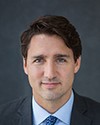Certainly. Thank you. I appreciate the opportunity to speak with you, Mr. Chairman, members of the committee.
I'm Janet Peace. I'm vice-president for markets and business strategy at the Pew Center on Global Climate Change. For those of you who are not familiar with the Pew Center, we're a non-profit, non-partisan think-tank, if you will, dedicated to climate policy. Our goal is mandatory climate policy in the U.S. and internationally. We work very closely with industry. We work very closely with policy-makers at the federal, state, and international levels. We're funded by the Pew Charitable Trust. We don't take dues from the companies we work with. We are independent in that way.
Let me congratulate you on Bill C-311. It's a very ambitious bill, and I look forward to the day that Canada has a federal climate policy.
I worked in Calgary on climate change for a number of years. I taught at the University of Calgary. And I believe Canada can do this, and that addressing climate change is in Canadians' best interest, as it is globally.
Addressing climate change is essential. The science demands it, industry expects it, the general public is becoming engaged, and policy-makers in the U.S. and globally are considering their options. As has been mentioned before, the U.S. policy agenda has definitely changed. It's changed at the state level. It's changed at the municipal level. Within the last year, as you know, it's changed at the federal level.
You've also heard that we have a bill that's been passed out of the House of Representatives, but I have to say at this stage it would be an understatement to say the U.S. climate policy's in flux. Policy deliberations are ongoing and they seem to change daily at the federal level in Congress, within the administration and its agencies, at the state level, and even at the municipal level. How all these multiple policies will develop and work together is very much still an unknown. Rumours abound, and policy experts everywhere seem to have different takes on possible outcomes.
With that in mind, I'd like to spend the next few minutes giving you my take and that of the organization I represent, our take on U.S. climate policy and where we think this issue stands in light of the upcoming meeting in Copenhagen.
You've heard that clean energy is a signature issue for President Obama, in speech after speech, in appointment after appointment. And as Mr. Tirpak noted, he even committed $80 billion in clean energy programs in the recent stimulus package. But President Obama can't enact climate legislation in isolation; he has to work with Congress, both the House of Representatives and the Senate, to develop policy that all can support and that he can sign into law.
I'm not going to spend much time on HR2454, because Mr. Tirpak and also Mr. Murrow have spent some time on those things. You know the bill covers 85% of the emissions in the economy and it seeks to reduce emissions 17% below 2005 levels by 2020, and 83% below 2005 levels by 2050.
It's important to note that this bill passed June 26 by a very narrow margin, 219 to 212. Passing of the bill marked the first time that a body of the Congress has passed legislation to regulate greenhouse gas emissions, but it was close: 44 Democrats voted against the bill and only eight Republicans voted in favour.
Now that the House has passed the bill, the Senate needs to act before the bill can be sent to the President. We at the Pew Center do believe it is possible to get an energy and climate bill that includes cap-and-trade enacted in this Congress, but we have to be realistic about the timing. The Senate debate on energy and climate is absolutely, without question, waiting for a health care debate to be finished here in the U.S., and it looks as if the health care debate could extend into the new year. Even if the Senate passes the health care bill, the bill from the House and the Senate has to be reconciled in a conference committee, and that's not likely to happen until early 2010. We've also heard recently that the Senate intends to take up a financial services modernization bill before it takes up the energy and climate bill, and that would delay a climate bill even more.
That doesn't mean that no one is working on climate legislation in the Senate. The energy and public works committee, chaired by Senator Barbara Boxer, recently passed Bill S. 1733 out of its committee. It's commonly called the Kerry-Boxer bill, but notably, it only had Democratic support.
A number of other Senate committees are also actively considering climate legislation. The agriculture committee and the finance committee will have key components to add. Earlier this year the energy and natural resources committee already produced energy legislation that may be complementary to a climate bill. The commerce committee and the foreign affairs committee also have jurisdiction over relevant topics that could be incorporated in the bill.
In addition to this committee work, I think it's very encouraging that Senator Graham from South Carolina, Senator Kerry, and Senator Lieberman have also begun talking about crafting a bill outside of the environment and public works committee process. They believe this will enable a wider bipartisan group of individuals to participate. In this way they're hoping they can ensure there will be the 60 votes necessary to get this bill passed.
Some of you may have seen the op-ed that Kerry and Graham wrote in The New York Times in which they basically outlined what they thought this bill would look like. Again, it's a market-based carbon regime. They believe it needs nuclear provisions; financial incentives for carbon capture and storage; a compromise on offshore oil and gas leasing; a border tax consistent with WTO obligations for countries without environmental standards; and a carbon-price floor and ceiling.
What happens with this framework? We hope that it will incorporate the work of the other committees and that it becomes a bill in the new year. We think that it will get debated early in the new year. But given the constraints of other congressional priorities and budget timing, action is most likely going to be March or April. If it happens much later than this we'll run into the 2010 mid-term election cycle, which will make congressional action on climate change even more challenging. It's important to note that there are some out there who say that a bill can't happen in 2010 because it's an election year, but every major piece of environmental legislation that's passed in the U.S. Congress, except for the Clean Water Act, passed during an election year. It's important to realize that this is possible. It will be challenging, and it has to happen probably within the first quarter if this is going to get through this Congress.
There are two things that are critical for an energy climate bill to emerge from the Congress. First, because we can't expect every Democratic senator to vote for an energy climate bill, the bill can pass only with a solid number of Republican votes. Right now even Republican senators with years of leadership on climate change have been reluctant to return to the leadership role. That's because the mood in our Congress right now is deeply partisan. That has to change. We'd have to see a number of Republican senators work constructively with the Democrats and the administration to develop and pass a bill. That's why having Senators Graham, Kerry, and Lieberman work together is so important.
Second, and we think this may be the most important, the Obama administration has to advance a fairly detailed vision for what must be in the bill. They need to generally become more involved in the legislative process, much as President Bush Senior did during his administration in the process of enacting the Clean Air Act amendments of 1990. The President's vision would have to include solid answers to questions like how will key manufacturing industries not be disadvantaged, and how will low-carbon energy technologies such as CCS, nuclear power, and renewables be advanced in this bill? We can see this happening. There is a window of opportunity, and we are hoping for the first quarter of 2010.
Clearly, what the U.S. Congress does on climate legislation has implications for what happens in the December meeting in Copenhagen. In a perfect world, Congress would pass legislation prior to Copenhagen so that the administration could go into the international conference with a clear and concrete negotiating position. Without a law on the books, the administration will be hard-pressed to commit to binding international targets. But as I mentioned, we don't think there's virtually any chance that legislation will be passed in 2009.
We think it is unlikely that the governments will be able to agree to a fully ratifiable treaty in Copenhagen. Instead, we think that a realistic and positive outcome for Copenhagen is a strong interim agreement setting the stage for a ratifiable treaty in 2010. This interim agreement may well include specific political commitments to action by all major emitting countries, mid-term emission targets or ranges for developed countries, and other types of quantifiable action for the major developing countries. It will also likely include pledges for prompt-start finance for developing countries. We believe that the agreement also must outline the fundamental architecture of a new treaty that once concluded will turn these interim political commitments into legally binding commitments.
Core elements that we think are essential in this interim agreement would be ambitious goals--agreeing to the two degrees Celsius, and a framework for mitigation commitments, clearly defining the nature of the mitigation commitments but recognizing the common but differential responsibilities as a core principle through the UNFCCC. We believe it should have support for developing countries. The interim agreement must broadly establish the mechanisms, the sources, and the levels of support to be provided in a final agreement for adaptation, capacity building, and technology deployment, and we think a sound system of verification is critical. The interim agreement must establish basic terms of measurement, reporting, and verification of countries' mitigation actions, and of support for developing country efforts, as called for in the Bali action plan.
To be clear, the ultimate goal is a ratifiable treaty, but at this stage, a two-step approach seems the most promising way to get there. An interim agreement in December that settles certain legal and design issues would be a huge step forward. Governments could then use 2010 to fill in the details and negotiate specific amendments as part of a ratifiable agreement.
I'm pleased to answer questions, and I'll turn it back over to you. Thank you.












